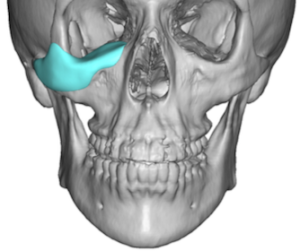There are various anatomic reasons for eye asymmetry most of which relate to the position of the eyelids to the globe…but the globes themselves are developmentally symmetric. But a very distinct form of eye symmetry is where the position of the globes themselves are not symmetric…one eye is at a different level than the other either vertically or horizontally. This is better termed am orbital asymmetry.
A distinct form of such eye asymmetry is vertical orbital dystopia. (VOD) In this congenital asymmetry the entire orbital box of one eye is at a different vertical level than the other. It may be higher or lower than the normal eye and it is up to the patient to say as to which is the normal eye. But in the vast majority of cases I have seen the abnormal eye is usually on the right side and is lower. (Right VOD)
What is unique about VOD and makes it challenging to surgically treat is that the entire orbital box is lower. This means every component of the eye and what surrounds it, the bony orbit, eyelids and eyebrow, is lower. As a result simply raising up the globe is not enough to improve the asymmetry and that maneuver alone may actually make it look worse.
A more effective and comprehensive approach to VOD surgery must take into account not only the position of the eyeball but that of the eyelids, brow bone, cheek and eyebrow as well. In my experience there are five layers to VOD surgery that often must all be done for an improvement in the eye asymmetry. The goal is two lessen the appearance of the asymmetry as complete improvement in the asymmetry is rarely if ever possible.
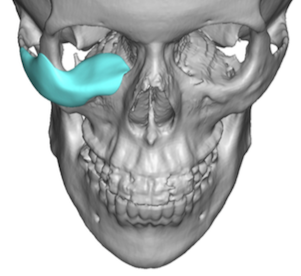
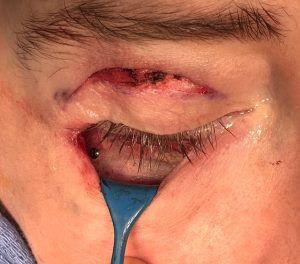
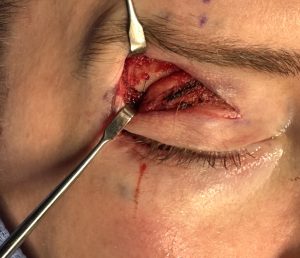
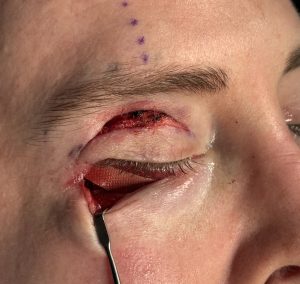
LAYER 4 The lower eyelid is then closed by resuspending the cheek tissues up to the implant and the bony lateral orbital rim.
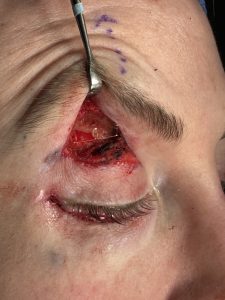
LAYER 6 In some cases removal of the lower half of the brow bone may be beneficial if it is sufficiently lower than that of the opposite side. This is done with a high-speed handpiece and burr through the upper eyelid incision before the brow lift is completed.
LAYER 7 Lastly the upper eyelid position on the iris will usually need to be elevated as the eyeball has been pushed upward.. The elevation of the floor of the orbit will cause an iatrogenic ptosis. This is usually treated by multiple sutures placed between the tarsus and the levator aponeurosis. Well this is the easiest procedure to perform of all the VOD components it is the most difficult to get it just right given all the changes that have been performed around it and to know exactly how much lid elevation is needed in a patient who is asleep.
While some patients may need all seven layers of VOD surgery for optimal improvement some will not. The exact procedures needed will have to be decided on an individual basis based on the extent of VOD and how it has affected the surrounding tissues.
Dr. Barry Eppley
World-Renowned Plastic Surgeon



